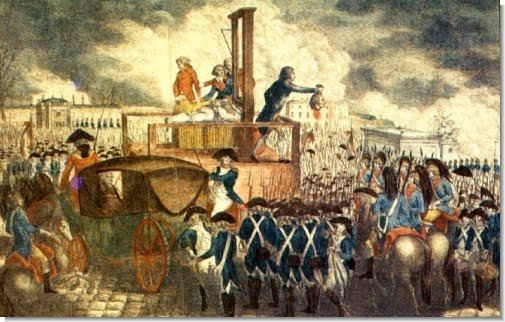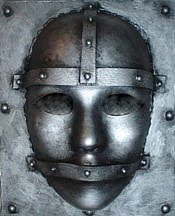Not many characters throughout history have provoked as much controversy as the Man in the Iron Mask. It's hard to know what to believe.
Most of the details that have available now are strictly flights of fancy but there is indisputable evidence that says that at least the basis of the story is true.
There really was a man, imprisoned at the Bastille, whose true identity was concealed by a mask.

It is 1698, during the reign of France's Louis XIV, otherwise known as the Sun King.
It's the era of the divine right of kings - the king's power was absolute and unquestioned. For example one of Louis XIV's best quotes is "L'état, c'est moi!" ("I am the state!"). While the egotistical King sits in his bejeweled palace, at the other end of the social spectrum are the prisoners.
This was a time when the King could imprison whoever he wanted for any reason that struck his fancy. No questions asked. Political intrigue? Prison. Inappropriate remarks? Prison. Too rich? Prison. Basically the Sun King's power was unquestionable.
The first record of a masked prisoner is from a notebook kept by Lieutenant Etienne du Junca, an official of the Bastille from October 1690 until his death in September 1706. The notebook states that on September 18th, 1698, Bénigne d'Auvergne de Saint-Mars, the new govenor of the Bastille, arrived.
Du Junca writes that Saint-Mars "brought with him, in a litter, a longtime prisoner, whom he had in custody in Pignerol, and whom he kept always masked, and whose name has not been given to me, nor recorded."
Saint-Mars had been the governor of the Fortress of Pignerol from 1665 to 1681 and the Man in the Mask had been imprisoned there all that time. Du Junca also commented that the prisoner was well treated, and had no complaints. He was permitted to attend Mass on Sundays and holidays, but had to keep his face covered by a "black velvet mask."
Five years later, on November 19, 1703, Du Junca records the death and burial of the "unknown prisoner, who has worn a black velvet mask since his arrival here in 1698."
Saint-Mars had the name "Marchialy" entered into the parish register, although spelling at the time wasn't standardized.

Within a few months of the arrival of the masked prisoner at the Bastille, stories were already circulating, each one wilder and more improbable than the last. The stories reached new heights after the prisoner's death.
By 1711, we have letters from Princess Palatine, the second wife of Louis XIV's brother, speculating about the "man who lived masked for long years in the Bastille and masked he died there."
Other prisoners later claimed they had known the Man in the Mask, and told their invented stories to different writers, such as Voltaire, who exaggerated them even more.
Voltaire, for example, claimed that the mask was made of iron and described in writing in 1751 how it was riveted on, describing in detail a "movable, hinged lower jaw held in place by springs that made it possible to eat wearing it."
There were rumors that the governor and jailors removed their hats in the presence of the prisoner, that they remained standing until he invited them to sit, served his meals on silver plate, and so forth - in short, etiquette accorded royalty.
His plight captured the public's imagination and the tale was embellished to involve two soldiers that constantly accompanied the man, ready to shoot him if he ever unmasked.
When the Bastille was stormed in 1789, the invaders reported that they had found the skeleton of a man, complete with an iron mask, chained up in one of the musty, hidden lower prisons. The discovery of an iron mask was a great coup in public relations, symbolizing the dreadful excesses of the monarchy.
As such, the myth (then and now) far outweighed the reality.